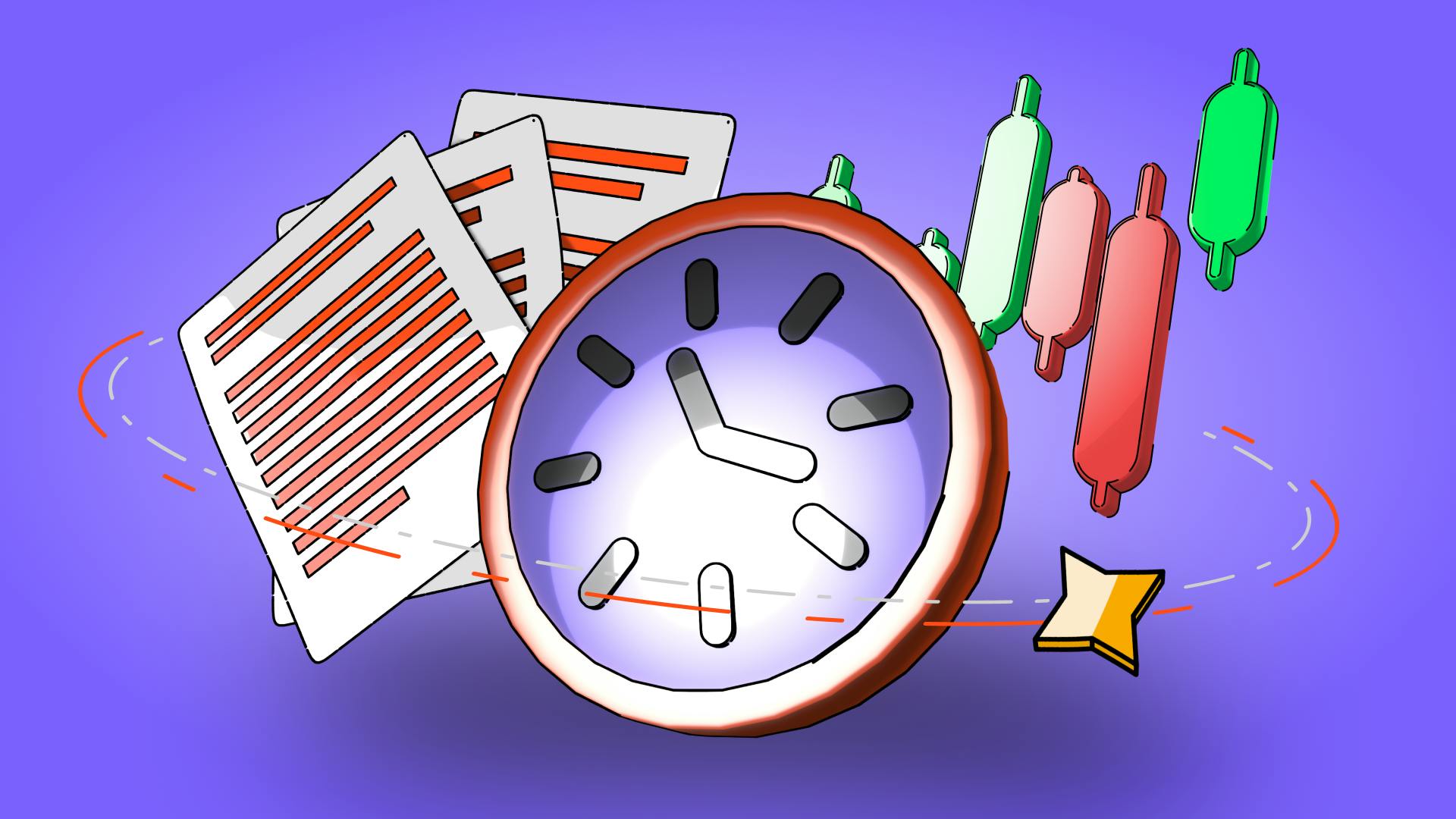What is Blockchain Network Congestion?
December 5, 2025

by Coinmetro Editorial Team
December 5, 2025
At its core, blockchain is a decentralized ledger that records all transactions across a network of computers. This technology ensures transparency, security, and immutability, making it crucial for cryptocurrencies like Bitcoin and Ethereum, as well as for applications in finance, healthcare, and more.
However, as with any system, blockchain networks can experience issues. One significant problem is network congestion. This occurs when there's a high volume of transactions waiting to be processed, exceeding the network's capacity to quickly handle them. Network congestion in blockchain can lead to slower transaction processing times and increased transaction fees, impacting users' experience and the efficiency of the blockchain.
Understanding blockchain network congestion is essential for anyone involved in the crypto space or utilizing blockchain technology. This article will explore what causes network congestion, its effects on transaction processing and fees, and how it can be mitigated.
Blockchain network congestion occurs when there's a pile-up of unconfirmed transactions within a blockchain's network. Imagine it like a busy subway system where more passengers are trying to board the trains than the system can accommodate. Similarly, during network congestion, more transactions are submitted than the network can process in a timely manner. This leads to delays and a backlog of transactions waiting to be confirmed.
Increased Demand: One of the primary drivers of congestion is a surge in the number of users trying to make transactions simultaneously. This often happens during significant market movements, such as sharp price increases or decreases, where everyone wants to buy, sell, or transfer their assets at the same time.
Small Block Size: Blockchain transactions are grouped into "blocks." Each block has a size limit, which restricts the number of transactions it can contain. If the block size is too small, fewer transactions can be processed at a time, contributing to congestion.
Slow Block Times: The interval at which new blocks are created and added to the blockchain, known as block time, also affects congestion. If the network has slow block times, it takes longer to process transactions, increasing the backlog.
These factors combined can lead to periods of significant delays and increased transaction fees as users bid higher to prioritize their transactions. Understanding these elements is crucial for navigating the blockchain space, especially during times of high activity.
Understanding the consequences of blockchain network congestion is crucial for users and developers alike. By recognizing these issues, stakeholders can work towards finding solutions and improving the overall efficiency and security of blockchain networks.
Increased Transaction Fees: As previously mentioned, when a blockchain network becomes congested, users often find themselves in a bidding war to get their transactions processed faster. This leads to an increase in transaction fees as users are willing to pay more to prioritize their transactions. High fees can make it prohibitively expensive for small transactions and can deter users from using the network.
Delayed Transaction Confirmation Times: During congestion, the time it takes for a transaction to be confirmed can increase significantly. This delay can be a few hours or even days, depending on the severity of the congestion. Delayed transactions can disrupt financial plans, business operations, and overall user experience.
Poor User Experience: Network congestion can lead to a poor user experience, especially for those new to blockchain technology. Users may find the network unreliable or too expensive to use for regular transactions. This can lead to frustration and may deter people from adopting or continuing to use blockchain-based applications.
Potential Security Risks: While not a direct consequence, prolonged network congestion can expose the network to potential security risks. For example, if transactions take too long to confirm, it may give bad actors more time to attempt double-spending attacks. Additionally, users may resort to less secure, faster alternatives, compromising their security.
Notable instances of network congestion in Bitcoin and Ethereum have had profound impacts on users and the overall network in the past. They have exposed vulnerabilities in blockchain infrastructure and have acted as a catalyst for the development and adoption of scaling solutions and improvements in network protocols.
Bitcoin's 2017 Congestion: One of the most significant congestion events in the history of blockchain occurred with Bitcoin in late 2017. As the price of Bitcoin soared to nearly $20,000, the network experienced unprecedented traffic. This led to a massive backlog of transactions, with some users experiencing delays of several days for transaction confirmations. Transaction fees skyrocketed, at times exceeding $50 per transaction, which was particularly problematic for small transfers. This event highlighted the scalability challenges of Bitcoin and led to increased interest in solutions like the Lightning Network to address these limitations.
Ethereum's CryptoKitties Surge: In December 2017, the Ethereum network faced its own congestion crisis due to the unexpected popularity of CryptoKitties, a blockchain-based virtual game. The game allows players to purchase, collect, breed, and sell various types of virtual cats. At the height of its popularity, CryptoKitties transactions accounted for a significant portion of all Ethereum network activity, leading to slow transaction times and high fees. This event showcased the potential impact of decentralized applications (dApps) on network performance and spurred discussions about scaling solutions for Ethereum.
Alleviating blockchain network congestion requires a multifaceted approach, encompassing both short-term and long-term strategies:
Increasing Block Size: One of the most straightforward solutions is to increase the block size, allowing more transactions to be included in each block. This approach has been subject to debate within the community, as it can lead to increased centralization, but it remains a viable short-term solution to reduce congestion.
Decreasing Block Time: Reducing the interval between each block can also help alleviate congestion by allowing transactions to be processed faster. However, this solution must be implemented carefully to avoid security risks associated with faster block times, such as increased orphan rates (unused block frequency) and chain splits.
Layer 2 Solutions: Scaling solutions, such as the Lightning Network for Bitcoin and Optimism or Arbitrum for Ethereum, create a secondary transaction layer on top of the main blockchain. This allows transactions to be processed more quickly and cheaply without burdening the main network. These solutions are seen as vital long-term strategies for managing congestion.
Sharding: A technique that divides the blockchain into several smaller, manageable pieces, or "shards," each capable of processing transactions independently. This can significantly increase the network's overall capacity. Ethereum's 2.0 upgrade implements sharding to improve scalability and reduce congestion.
Optimizing Transaction Processing Strategies: Implementing more efficient transaction processing strategies, such as prioritizing transactions based on fee rate rather than just fee size, can also help manage congestion. Additionally, encouraging users to batch transactions, where possible, can reduce the overall number of transactions waiting to be confirmed.
Off-chain Transactions: Encouraging or enabling transactions to occur off the main blockchain, where appropriate, can also alleviate congestion. This could include using sidechains or other off-chain solutions where transactions are settled away from the main chain but retain the security and integrity of the blockchain.
Implementing these solutions requires a coordinated effort from the entire blockchain community, including developers, miners, and users. By combining these strategies, it is possible to significantly alleviate congestion on blockchain networks, leading to faster transaction times, lower fees, and a better user experience for all.
When blockchain networks become congested, users can face high transaction fees and slow processing times. However, there are strategies and tips to manage transactions more effectively during these periods:
Adjusting Transaction Fees: Users have the option to adjust their transaction fees based on urgency. If your transaction is not time-sensitive, you can choose a lower fee, but it may take longer to be processed. Conversely, if you need a transaction to go through quickly, you can increase the fee to prioritize it. Tools and services that provide real-time fee estimates can help you make informed decisions.
Transaction Batching: If you have multiple transactions to make, consider batching them into a single transaction. This is particularly useful for businesses or services needing to process many payments. By doing so, you can significantly reduce the total fee compared to sending each transaction separately.
Utilize Off-Peak Times: Network congestion often follows predictable patterns, correlating with peak trading hours. Conducting transactions during off-peak times can result in lower fees and faster processing.
Leveraging Layer 2 Solutions: Consider using Layer 2 solutions such as Lightning Network (for Bitcoin) or rollups (for Ethereum). These platforms can process transactions more quickly and cheaply during congestion.
Monitor Network Activity: Keep an eye on the blockchain network's activity level. Various tools and websites can provide real-time data on network congestion, average transaction fees, and expected confirmation times.
Be Prepared for Delays: During periods of high congestion, prepare for potential delays. Ensure there is enough balance in your wallet for increased fees and understand that transactions might take longer to confirm.
As global crypto adoption increases, it will place more stress on blockchain networks. This necessitates advancements in blockchain technology to ensure scalability and usability. Preparing for higher transaction volumes is essential for maintaining efficient and accessible networks as crypto becomes more integrated into mainstream financial systems and daily transactions.
The ongoing developments in blockchain technology are focused on improving scalability and reducing congestion. Innovations like sharding, Layer 2 solutions, and protocol upgrades aim to enhance network capacity and efficiency. These advancements are crucial for supporting more users and applications on blockchain networks. As the blockchain ecosystem continues to evolve, finding solutions to congestion will remain a priority for developers and users alike, paving the way for more widespread adoption and innovative applications.
Join the Coinmetro community on Discord and Telegram, where forward-thinking traders and investors gather to share insights, explore new opportunities, and dive deep into the world of cryptocurrencies. Should you need any help, feel free to reach out to our world-class Customer Support Team via 24/7 live chat or email at hello@coinmetro.com.
To become a Coinmetro user today, Sign Up now, or head to our new Exchange if you are already registered and experience our premium trading platform.
Tags
Related Articles

Regulatory Sandboxes: Fostering Crypto Innovation Within Legal Frameworks
The cryptocurrency industry’s fast rise fuels an important debate. Innovation aims to transform finance, enhancing speed and access. Yet, regulators…
5m

Crypto Options Trading: Strategies and Market Insights
Cryptocurrency markets have rapidly expanded beyond simple buying and selling. One of the most significant developments has been the rise of…
6m

The Rise of Social-Fi: Blending Social Media with Decentralized Finance
In recent years, social media and finance have started to merge, creating Social-Fi. This concept blends the engagement of social platforms with…
6m

DeFi Insurance Platforms to Watch in 2024
Decentralized Finance (DeFi) insurance addresses the growing need for insurance against hacks, smart contract failures, and other DeFi-related risks.…
7m